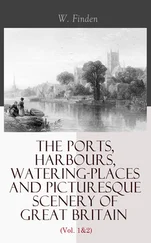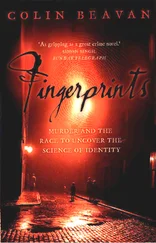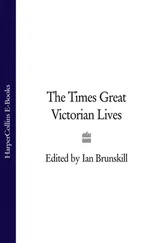Jack and Charlotte Whicher moved south of the river in about 1880, to a small terrace on the brow of Lavender Hill, Battersea. This district, a mile from Westminster, was known for its market gardens, like the village in which Whicher was raised, but the flowerbeds and nurseries were disappearing under rows of suburban houses. The Whichers' house, 1 Cumberland Villas, had a substantial garden to the rear - the biggest in the block - with views down to the railway. From January 1881, horse-drawn trams rattled along the road in front of the house. Directly opposite, a Mr Merryweather ran a nursery garden, the last to survive on a hill that only a few years earlier had been famous for its fields of lavender.
In the summer of 1881 Whicher fell ill with gastritis and a stomach ulcer, and on 29 June, after his stomach wall was perforated, he died, aged sixty-six. His ward Amy Gray, now a twenty-five-year-old milliner, was at the deathbed; on the death certificate she was registered as his niece. Whicher left Amy PS150 in his will, and a gold Swiss watch. He left PS100 to Emma Sangways, the other girl whom he and Charlotte had looked after, and PS300 to his niece Sarah Holliwell. He bequeathed PS150, a gold watch and chain and a signet ring to a friend called John Potter, a surveyor's clerk who worked in Whitehall Place, and PS100 to his friend and proteegee Dolly Williamson, now Chief Superintendent of Scotland Yard. These two were appointed executors of the will. The remainder of his estate - about PS700 - went to his wife.
A three-sentence obituary of Jonathan Whicher appeared in the Police Gazette. He had been almost forgotten. For all the brilliance with which he investigated the Road Hill murder, Whicher had been powerless to give the public the certainty that they craved or to deliver them from the evils that he saw. He was punished for his failure. From now on, the detective heroes of England would be found only in the realm of fiction.*
After Jack's death, Charlotte moved to the house of John Potter in Saunders Road, Notting Hill. Amy Gray and Emma Sangways went with her. Charlotte died in January 1883, at the age of sixty-nine, leaving the bulk of her assets to Amy and Emma. She appointed Dolly Williamson the sole executor of her will.
Williamson was 'a quiet, unpretending, middle-aged man', recalled the police historian and prison governor Major Arthur Griffiths, 'who walked leisurely along Whitehall, balancing a hat that was a little large for him loosely on his head, and often with a sprig of a leaf or flower between his lips. He was by nature very reticent; no outsider could win from him any details of the many big things he had 'put through'. His talk, for choice, was about gardening, for which he had a perfect passion; and his blooms were famous in the neighbourhood where he spent his unofficial hours.'
The Chief Superintendent was known as 'the Philosopher' for his abstracted, intellectual manner, and was said to direct operations from his desk as if playing a game of chess. A colleague described him as 'A Scot, from the crown of his head to the sole of his foot, loyal, hardworking, persevering, phlegmatic, obstinate, unenthusiastic, courageous, always having his own opinion, never afraid to express it, slow to grasp a new idea, doubtful of its efficacy, seeing its disadvantages rather than its advantages, but withal so clear-headed, and so honest, and kind-hearted to a fault, he was a most upright and valuable public servant.' Williamson was the antithesis of Whicher's early partner Charley Field, who revelled in his proximity to a criminal underworld. These two men bracketed Whicher, defined the range of what a Victorian detective could be. Field - who by the 1870s was reduced almost to poverty - recalled the daredevil thief-takers of the eighteenth century, while Williamson gestured forward to the careful commanders of the twentieth.
In a notorious trial of 1877, several of Williamson's men were found guilty of corruption, confirming the public suspicion that professional detectives were greedy and duplicitous. Williamson was said to be heartbroken by the betrayal. He took charge of the Criminal Investigation Department when it was founded the next year. Though he led the department during the investigations into the 'Jack the Ripper' murders of Whitechapel prostitutes in 1888, he was too unwell to take an active part. According to a police commissioner, he was 'worn out before his time by the constant strain of very harassing work'. He died in 1889, aged fifty-eight, leaving a wife and five children. Williamson's coffin was covered with flowers and carried to St John's Church, opposite his house in Smith Square, Westminster, by six detective inspectors.
'Most of the prominent detectives of to-day learnt their work under Williamson,' wrote Griffiths in 1904. 'Butcher, the chief inspector . . . is as fond of flowers as was his master, and may be known by the fine rose in his buttonhole.' This love of flowers had originated with Jack Whicher's father, the Camberwell gardener, and seemed now to have been passed on through the first sixty years of the detective force, from man to man.
Constance Kent was shuffled between gaols - from Millbank to Parkhurst, on the Isle of Wight, to Woking in Surrey, and back to Millbank. At Parkhurst she made mosaics, geometrical puzzles pieced together on boards and dispatched to be laid on the floors of churches in southern England: St Katharine's in Merstham, Surrey; St Peter's in Portland, Dorset; St Swithun's in East Grinstead, Sussex. She was a gifted mosaicist. While at Woking she worked on the floor for the crypt of St Paul's Cathedral in London. Like her brother William, she was drawn to the tiny, to fragments that told stories. Among the images on the floor of the St Paul's crypt is the fat-cheeked face of an infant boy, his eyes wide as if startled, wings sprouting from the sides of his head.
At Millbank, Constance worked variously in the kitchens, the laundry and the infirmary - a set of 'naked and grated chambers', wrote Henry James, washed in 'a sallow light'. Major Arthur Griffiths, then the deputy governor of the gaol, praised her work in the sickroom: 'nothing could exceed the devoted attention she gave the sick under her charge as a nurse'. He recalled her in his memoirs as
a small, mouse-like creature, with much of the promptitude of the mouse or the lizard, surprised, in disappearing when alarmed. The approach of any strange or unknown face whom she feared might come to spy her out and stare constituted a real alarm for Constance Kent. When anyone went the length of asking, 'Which is Constance?' she had already concealed herself somewhere with wonderful rapidity and cleverness. She was a mystery in every way. It was almost impossible to believe that this insignificant, inoffensive little person could have cut her infant brother's throat in circumstances of such particular atrocity. No doubt there were features in her face which the criminal anthropologist would have seized upon as being suggestive of instinctive criminality - high cheek bones, a lowering, overhanging brow, and deep-set, small eyes; but yet her manner was prepossessing, and her intelligence was of a high order.
Griffiths returned in another memoir to the young woman's ability to conceal herself:
Constance Kent was like a ghost in Millbank; flitting noiselessly about, mostly invisible . . . She spoke to no one, and no one addressed her, the desire to efface herself was always respected, and her name was never mentioned.
In 1877 Constance petitioned Richard Cross, the Home Secretary in Benjamin Disraeli's Conservative government, for an early release. William's former father-in-law, Thomas Bennett, also wrote to Cross on her behalf. Their pleas were turned down. That summer, the Millbank medical officer recommended that Constance be spared cooking duties (these were arduous, and the kitchens gloomy and bare) and instead given needlework shifts. The authorities should consider transferring her to another gaol, he said, as her health was weakening and she would benefit from a 'change of air' - but he did not recommend returning her to Woking, because of 'the great dislike which for some reason or other she entertains to that prison'. She was sent later that year to the female convict prison at Fulham, south-west London, which housed four hundred women.
Читать дальше












